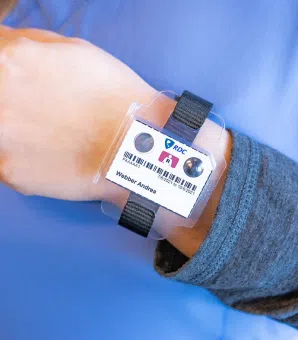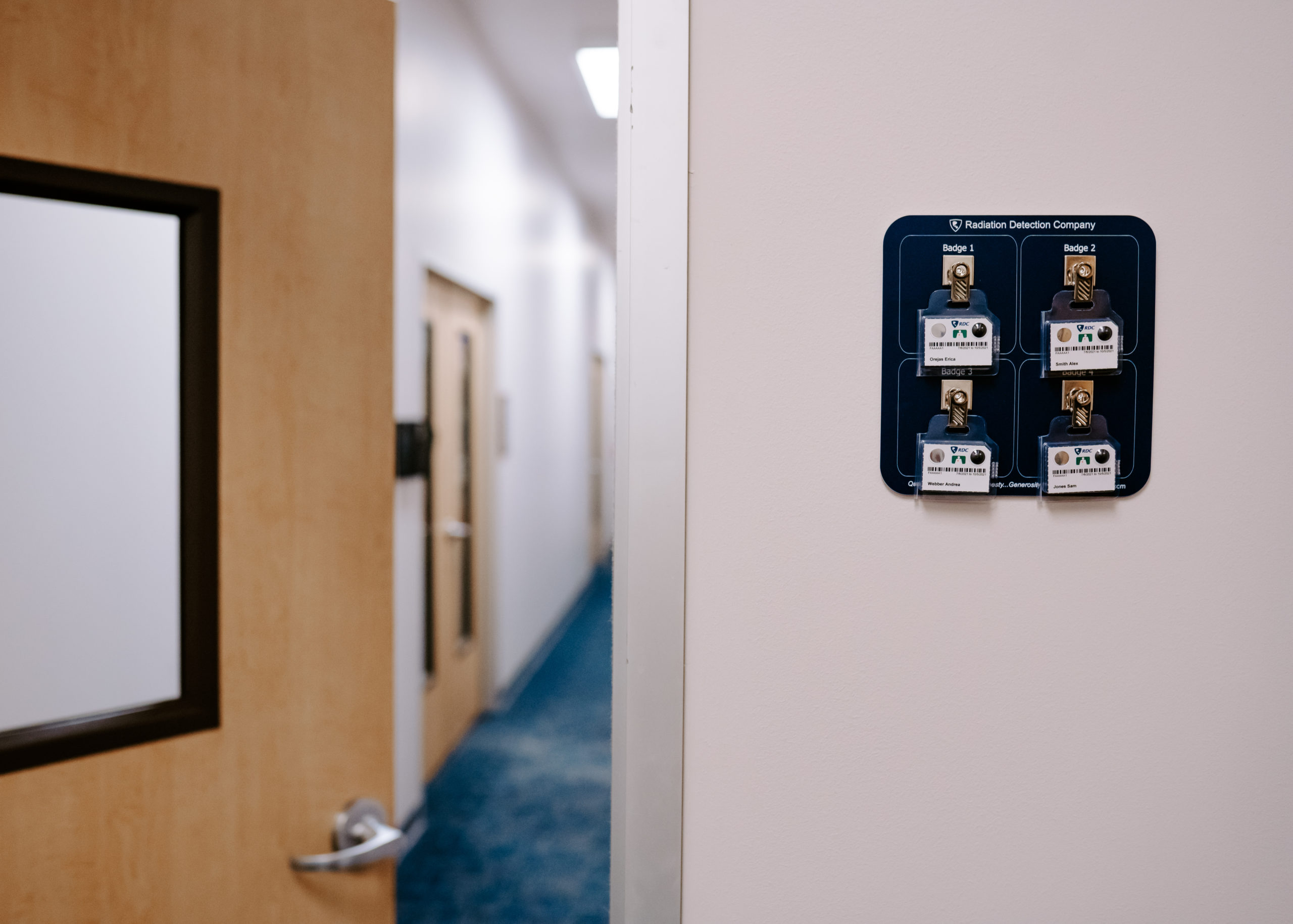
Dosimeter badge services for medical, dental, and veterinary businesses
Learn how Radiation Detection Company’s easy-to-use dosimetry solutions can boost the efficiency of your practice.
Control dosimeters play an important role in calculating occupational radiation exposure, but they are often overlooked or used incorrectly. Our team at RDC frequently fields questions about the ins and outs of Control Dosimeters. We decided to compile a breakdown of everything you need to know about this crucial piece of radiation dosimetry equipment.
We hope you find this article informative, and as always, we look forward to hearing your feedback! Without further ado, here are eight things you should know about control dosimeters.
A Control Dosimeter is a badge that is fundamentally the same as the radiation badge used to protect radiation workers. However, Control Dosimeters are used to measure external radiation exposure from ambient background radiation sources (while the badge worn everyday measures occupational exposure and ambient background radiation).
The most common non-occupational sources of radiation exposure are:

A Control Dosimeter plays an integral role in providing an accurate measure of occupational dose. Occupational dose is the amount of ionizing radiation (which includes x-ray, gamma, beta or neutron radiation) exposure received by workers in the course of their employment.
The control badge measures the background radiation dose received during shipment (either to you or back to us) and storage. To obtain occupational dose, the measurement recorded on the control dosimeter is subtracted from the individual doses recorded on each badge in the group.
The difference of the two measurements is the occupational dose for that radiation worker. Having an accurate measure of occupational radiation ensures the number is within the limit allowed by applicable regulations.
A Control Dosimeter should be included in each regular badge shipment as part of your agreement with your service provider. Dosimeter badges offered by RDC include TLD badges (including a neutron monitoring option), as well as extremity badges in both ring dosimeter and wrist options. RDC also offers multiple monitoring option types, such as personnel whole-body monitoring, area monitoring, fetal monitoring, and more.
If you are unsure what type of whole body dosimeter badge is best for your company, our complete range of solutions can be found here. We’re also always happy to connect with you on your organization’s needs.

Proper storage of the Control Dosimeter is an essential factor in its use. Your company's radiation safety program and radiation safety office will provide proper storage details. The most important element is that the control badge is stored in a location away from the radiation source at your facility and in a location that represents the background radiation for the workplace.
The ideal storage location for the control badge is on a dosimeter storage board, also called a "badge board". These boards provide a standardized storage location for all workers to place their dosimeter when it's not in use. Placing these storage boards at entries or exits to your facility is a reminder for workers to put on their dosimeter when entering, and to place it on the board before exiting the facility.
Storing radiation dosimeters together with the control dosimeter provides the best estimate of the ambient background radiation onsite.
If a dosimeter storage board is not being used, the next best location is an area representative of the background radiation exposure that the control dosimeter is monitoring. In most cases, a break room or reception area is an appropriate storage location.
Storing radiation dosimeters (or control dosimeters for that matter) in desks, offices, control rooms, outside X-ray rooms, in cars, at home, or on a lead apron is not recommended. Never store the control dosimeter in a lead box or safe because it will underestimate the background radiation. Also do not issue a control dosimeter to a radiation worker or use it as an area monitor. If your office has a badge coordinator, they can share where your badge should be stored.
For more information about wearing and managing X-ray badges, please check out our blog on Best Practices for Wearing a Radiation Dosimeter Badge.
If all personnel radiation badges are being stored in the same area, at least one control dosimeter for each badge type and wear period will suffice. Typically, a wear period will be one month (meaning badges are exchanged monthly), two months, or one quarter.
If your account is split into groups and badges are being shipped to other locations, it is necessary to have a control dosimeter travel with each group of badges. The absence of a control dosimeter in this instance may result in an incorrect measurement of occupational dose.
Additional control dosimeters may be purchased by contacting our Customer Care team here.
There’s no need to panic if your Control Dosimeter records a dose, as this is a normal occurrence. The recorded dose represents the background and transit dose received on the badge from the time it left our facility until it was returned.
The dose recorded on a control dosimeter is usually low, and generally relatively constant from report to report. A control dosimeter will usually record a small dose (5-20 mrem per month) depending on the area of the country you live in or if air transportation is used to ship dosimeters.

The control dosimeter should be returned along with all badges for the same wear period. The wear period dates are listed on each badge so you can easily tell which set a badge belongs to. All badges should be returned in the box or pre-addressed envelope provided to you in your regular shipments.
For badges returned without a control, the reported dose will include background and transit dose along with the occupational dose received by the individuals. A subtraction of 0.18 mrem per day from the anneal to processing will be applied. This results in an inaccurate measure of occupational dose for each badge in the group. Thus, it's important that the correct process for returning Control Dosimeters is followed.
Want to take the next step in getting your organization set up with RDC’s dosimetry badge products? Please visit our Solutions page to view our full suite of offerings.
We offer a wide range of affordable and comprehensive X-ray badge services to fit the needs of any organization, large or small. We understand that choosing a solution can be difficult, which is why our world-class customer service team is happy to provide guidance to help you make the best decision for your company.
Have a question that we did not address in this article? Please reach out to our Customer Care team, and one of our specialists will be happy to assist you.
Learn how Radiation Detection Company’s easy-to-use dosimetry solutions can boost the efficiency of your practice.
